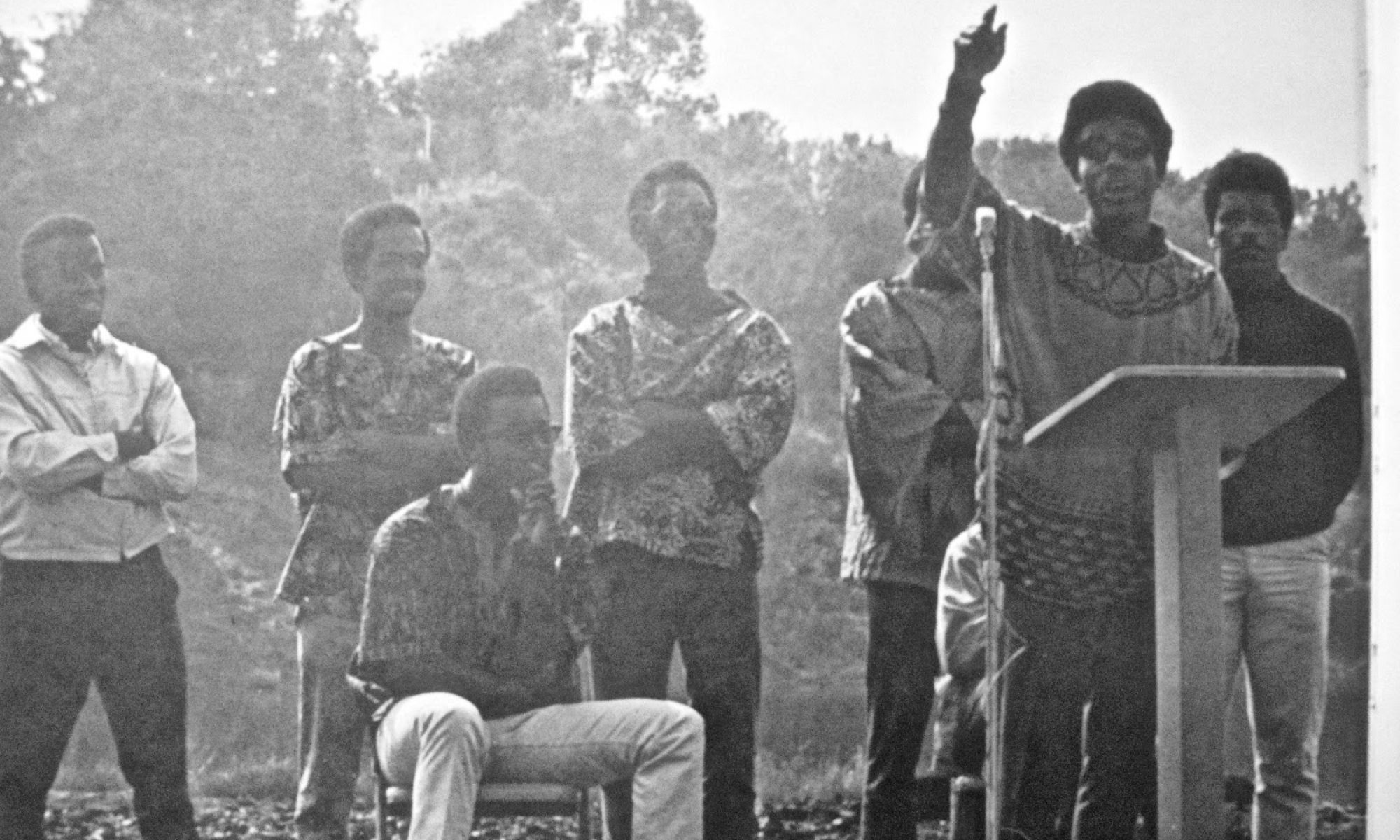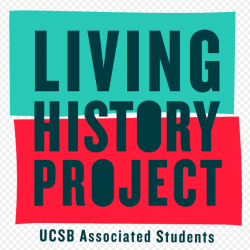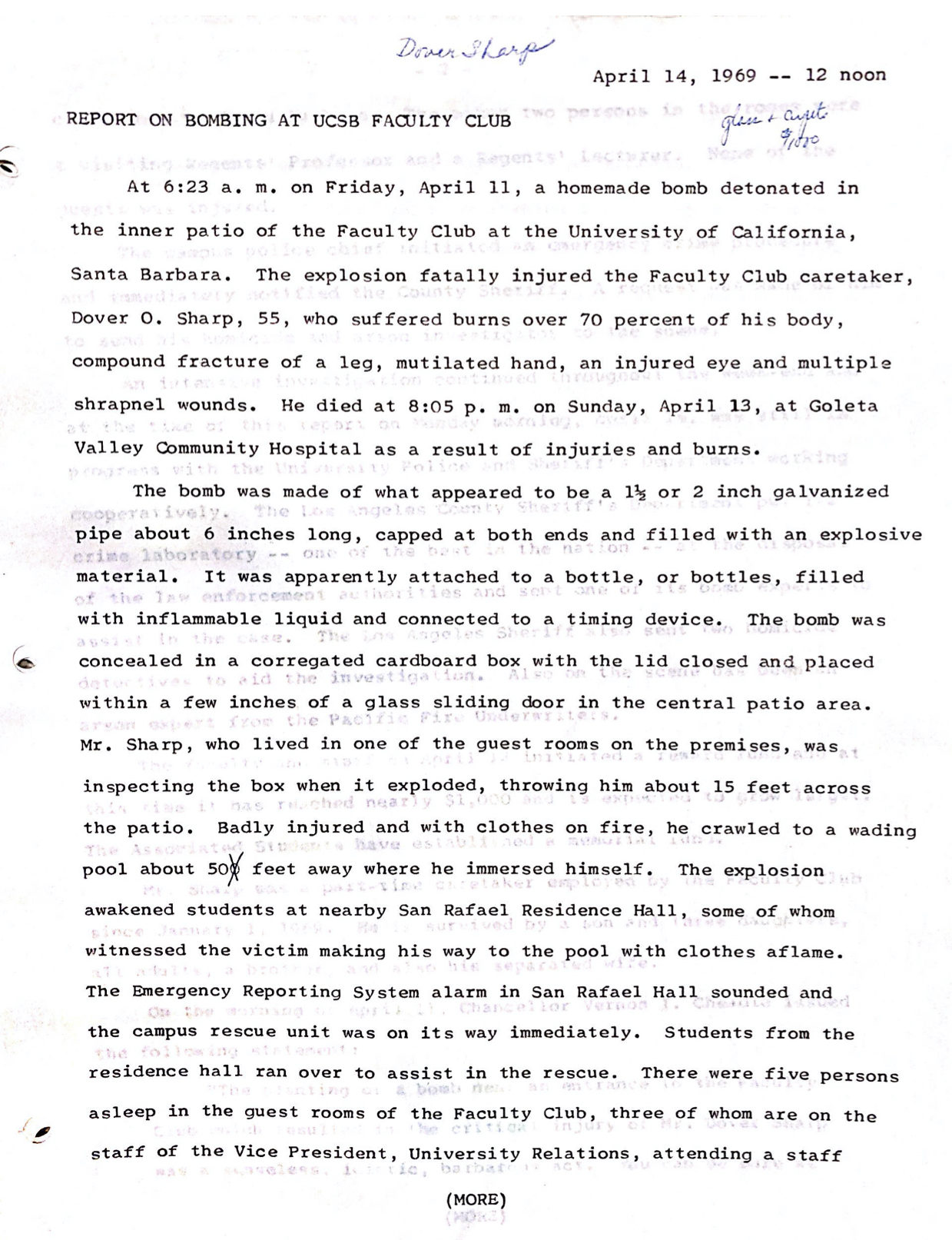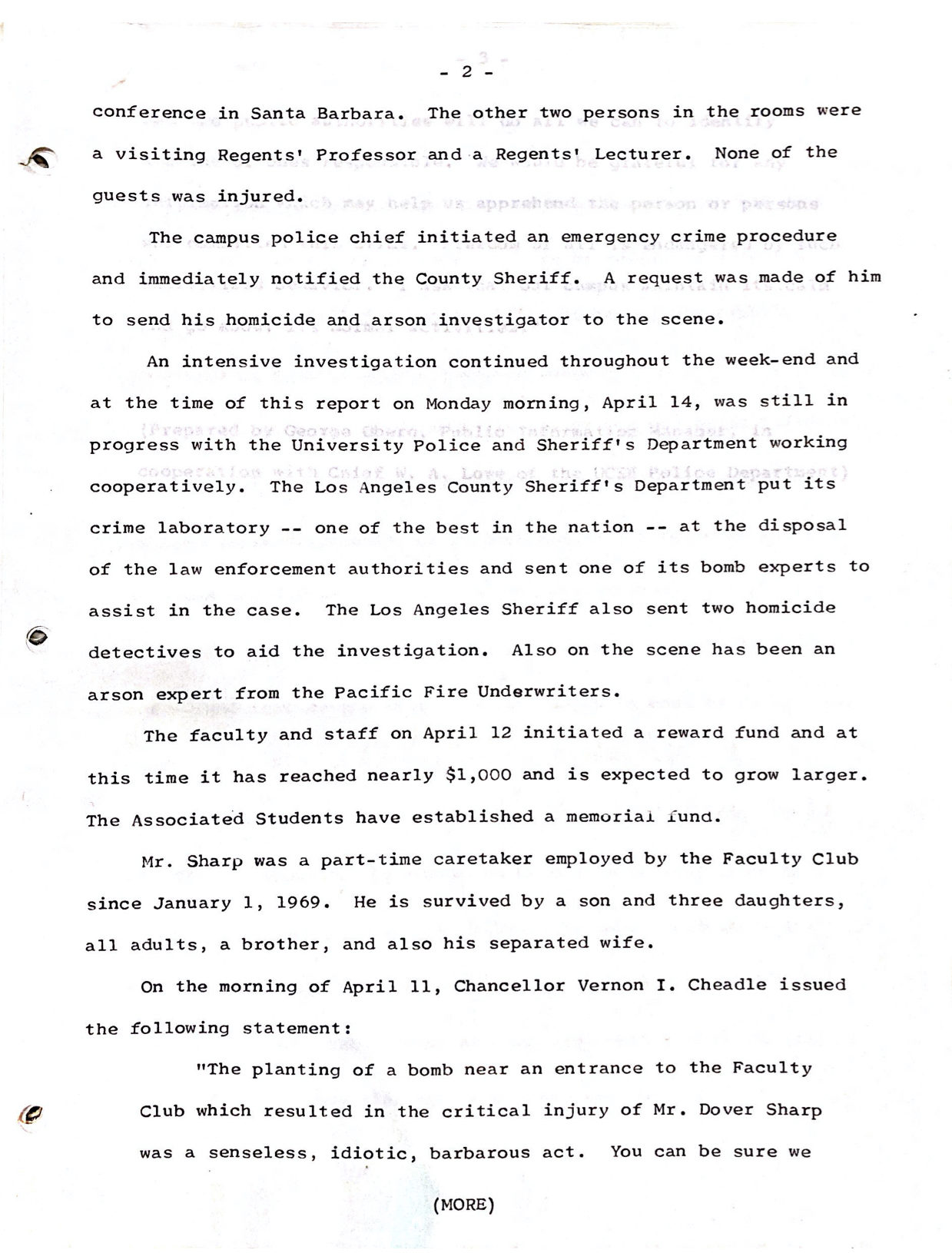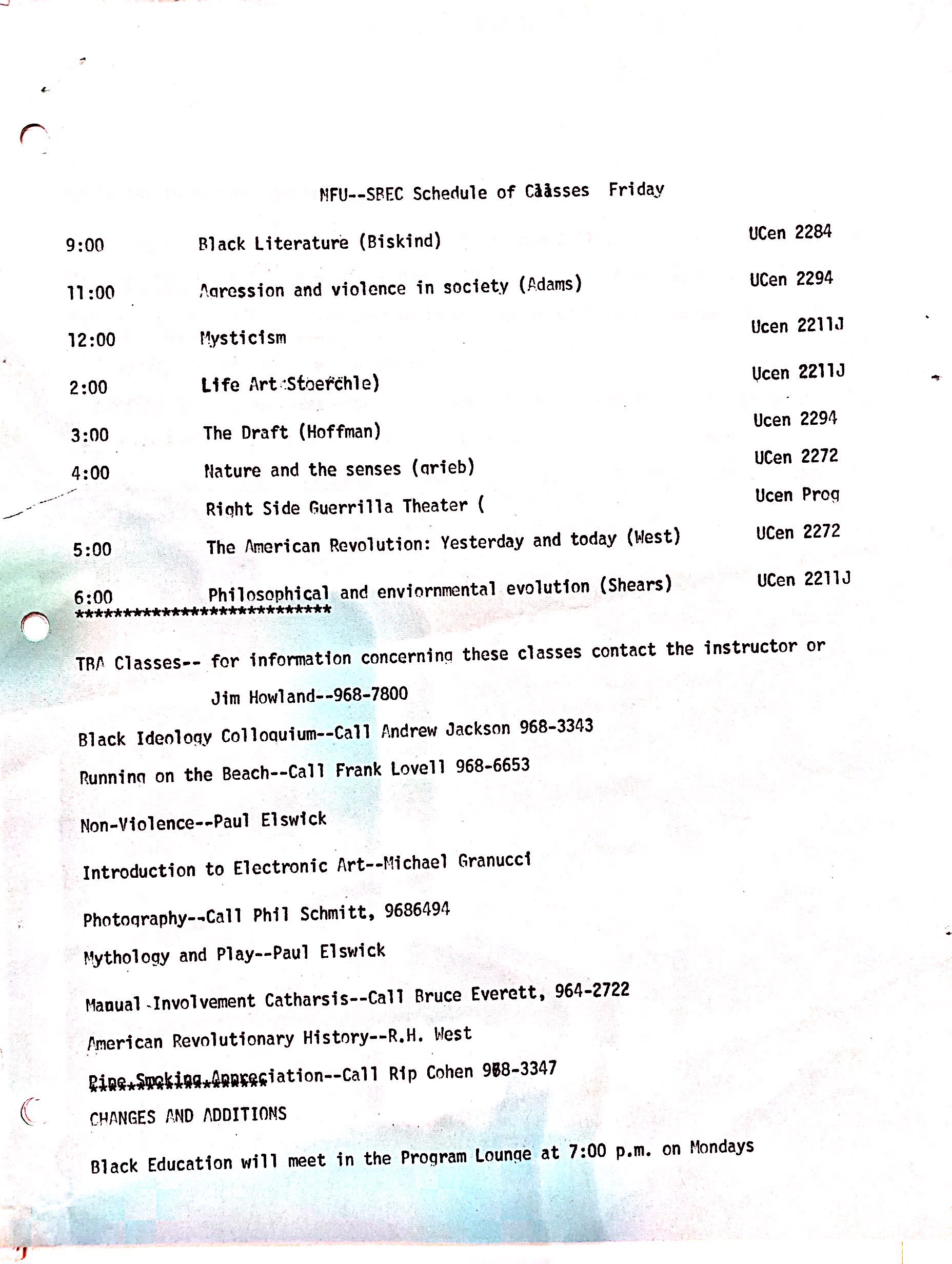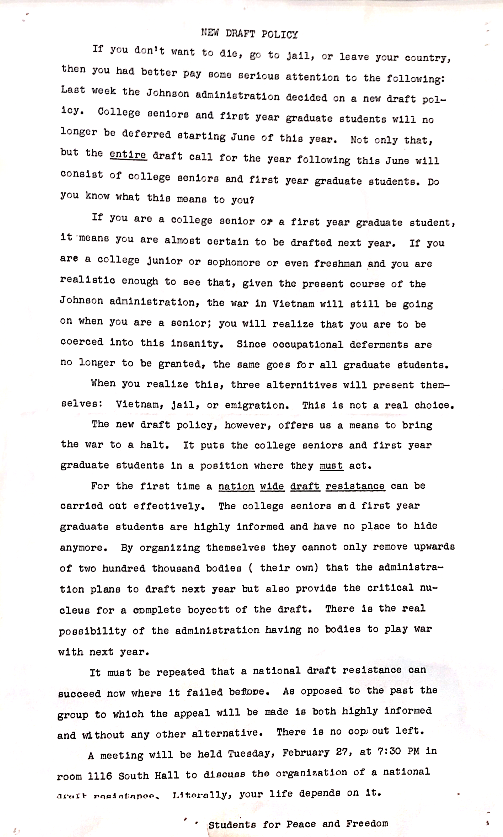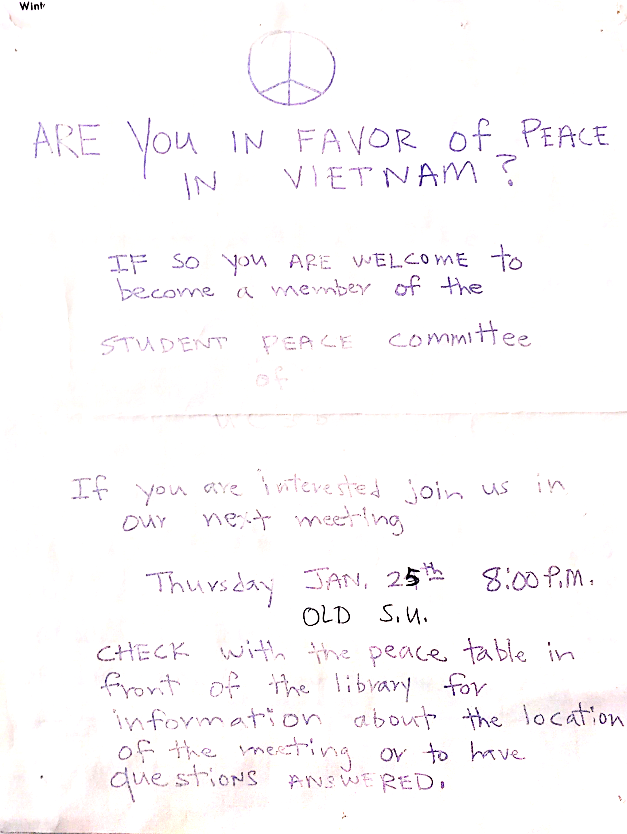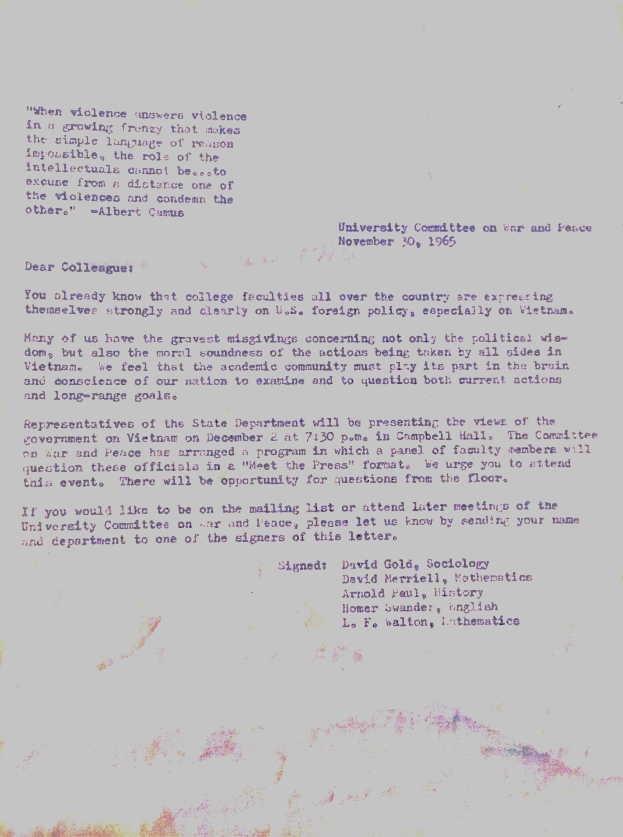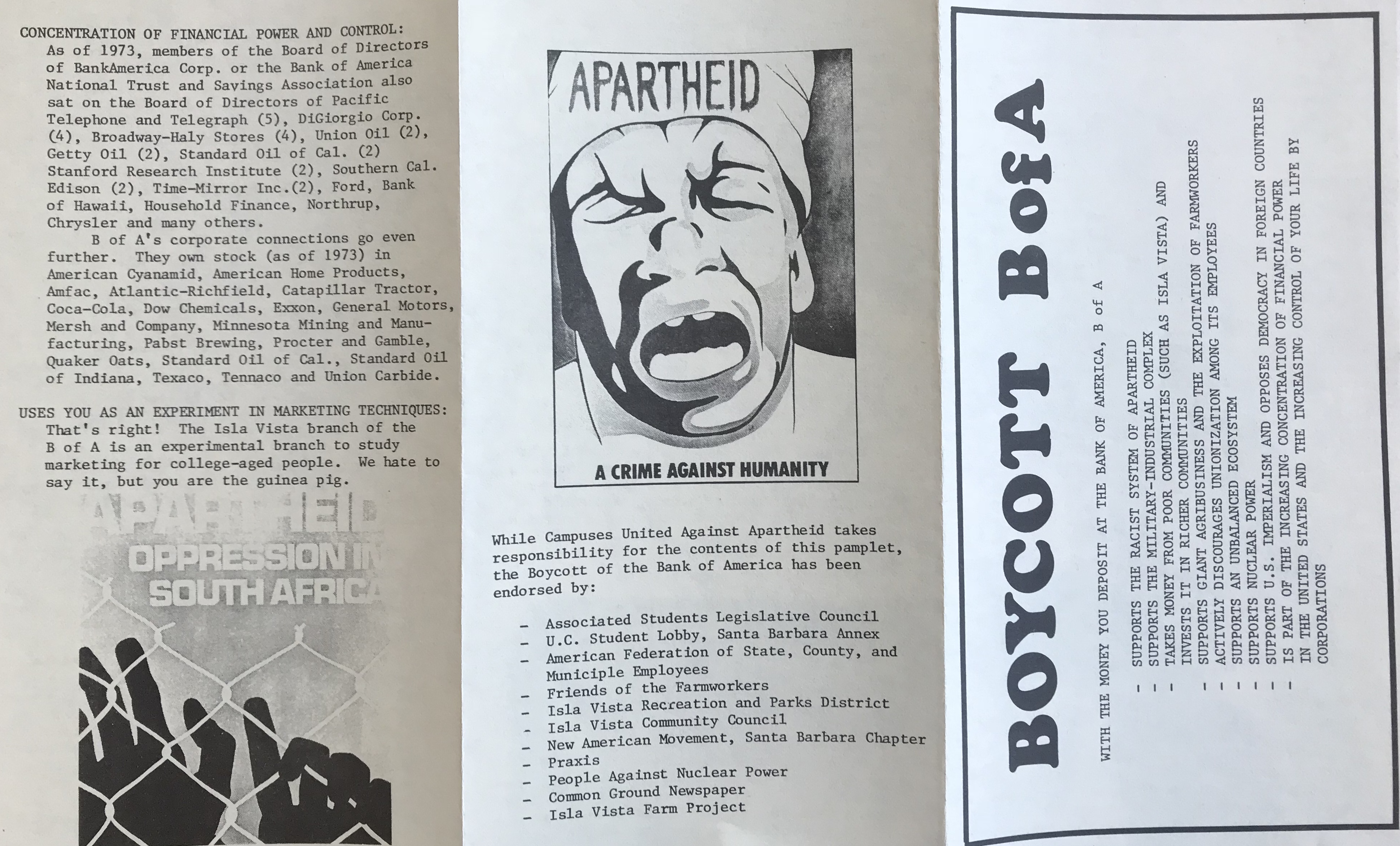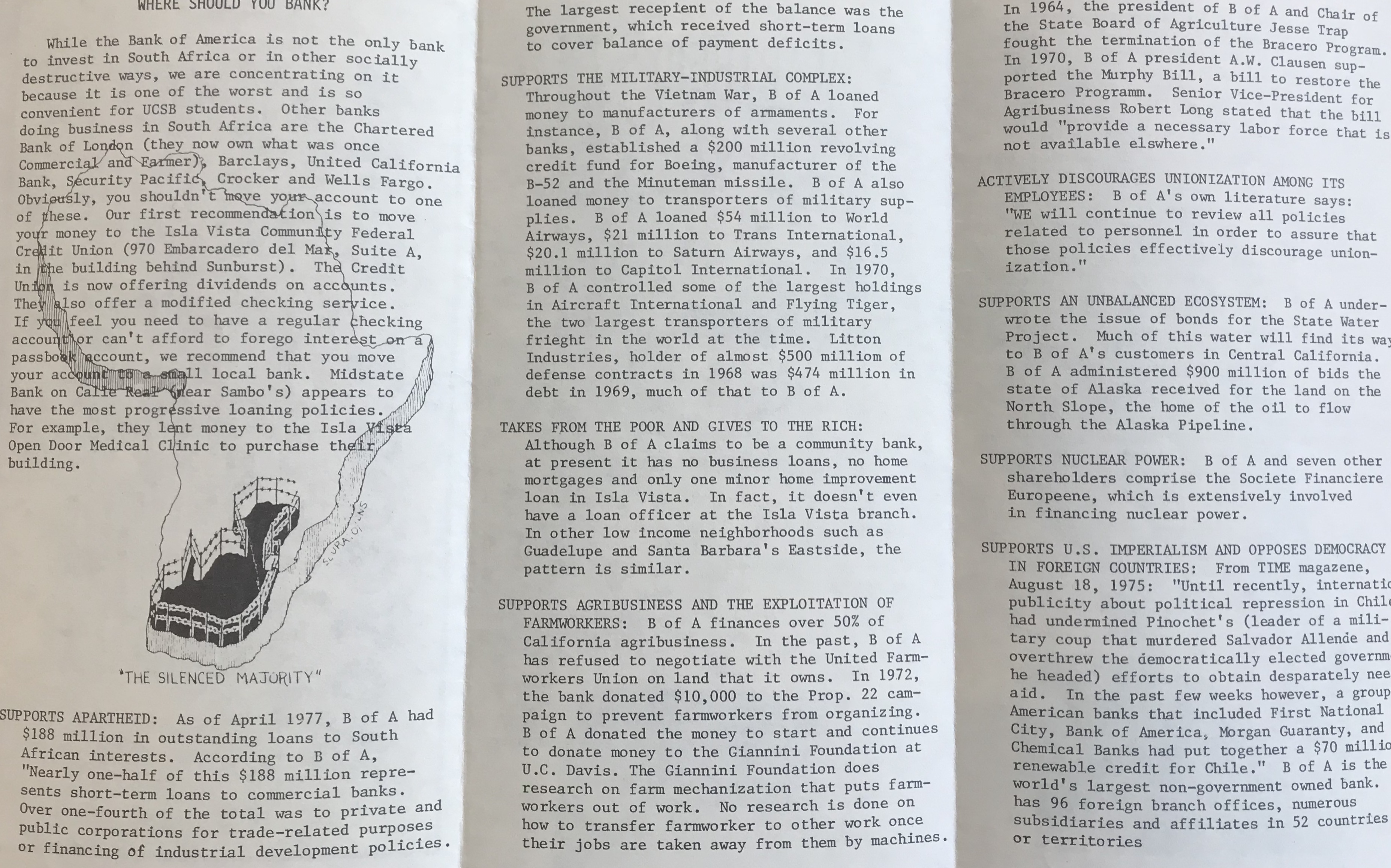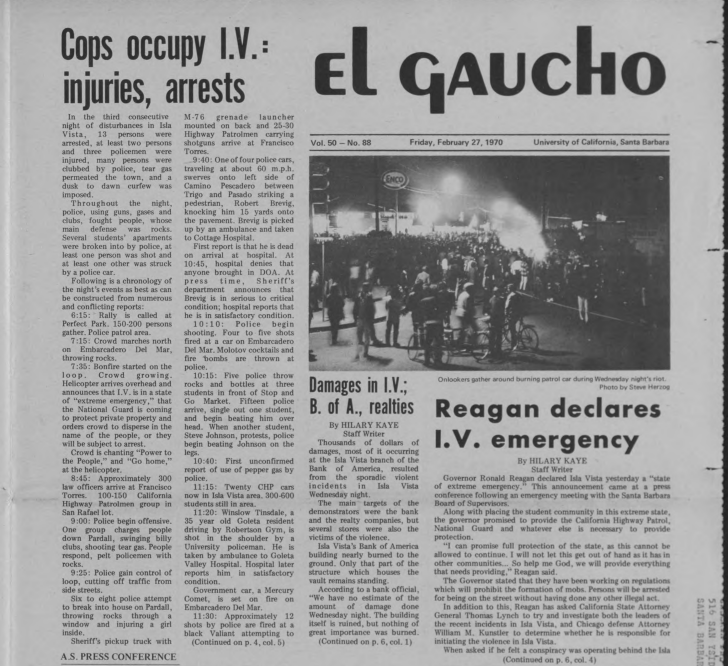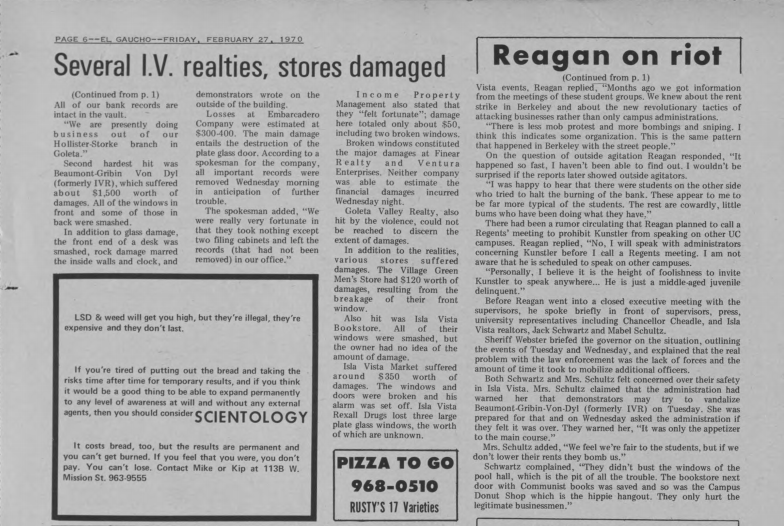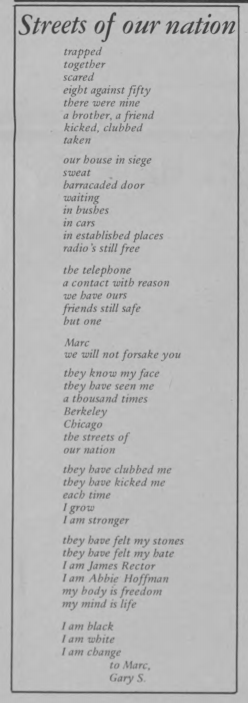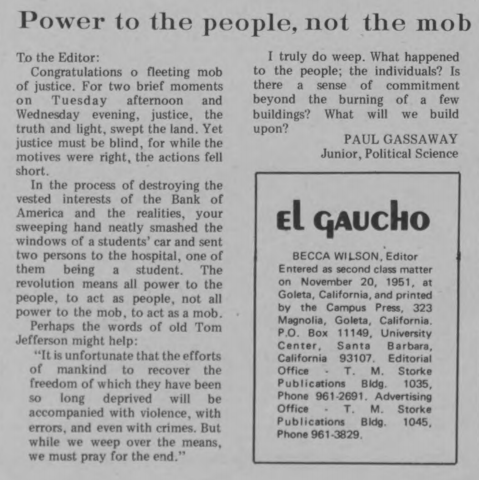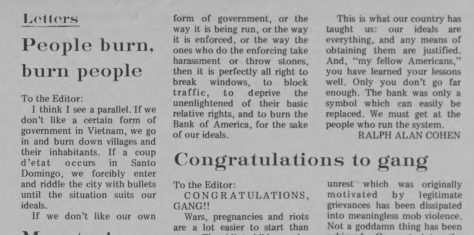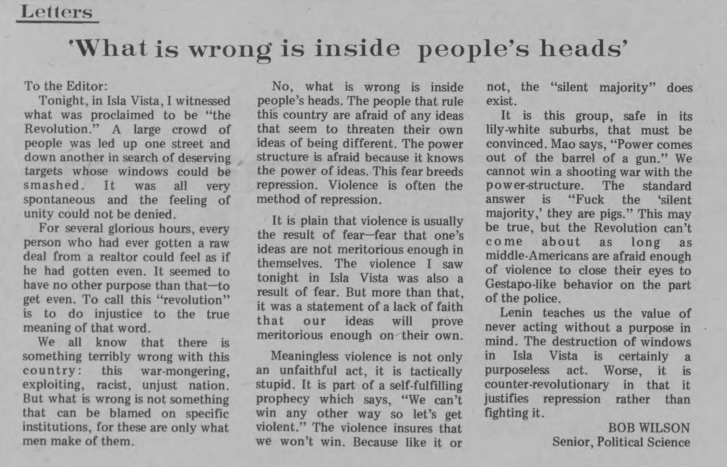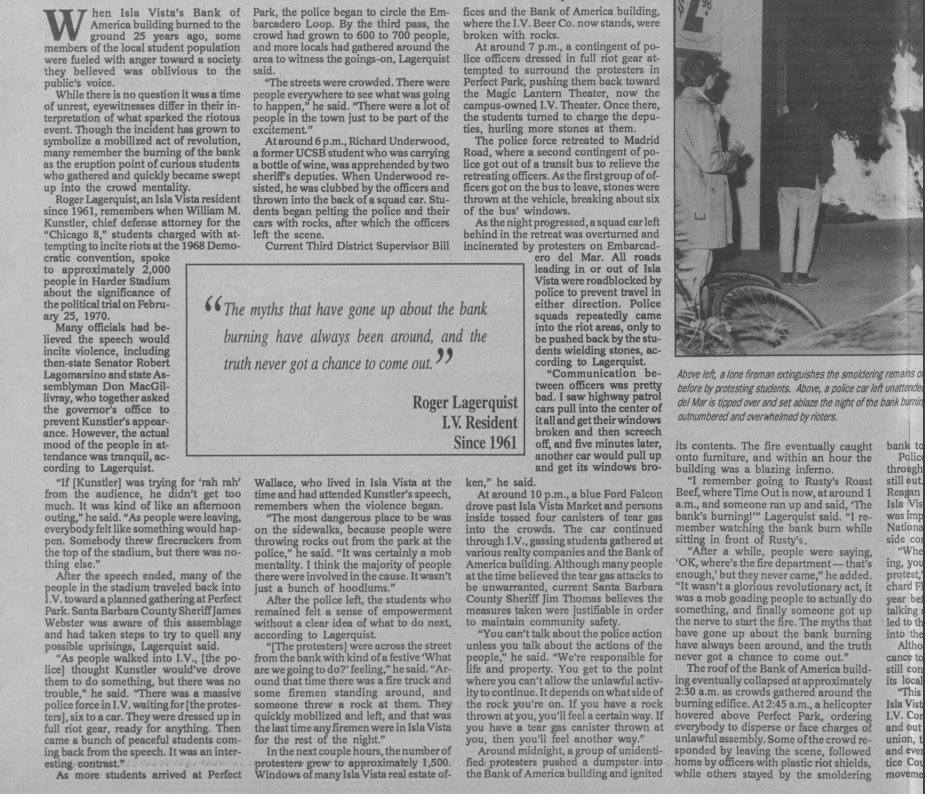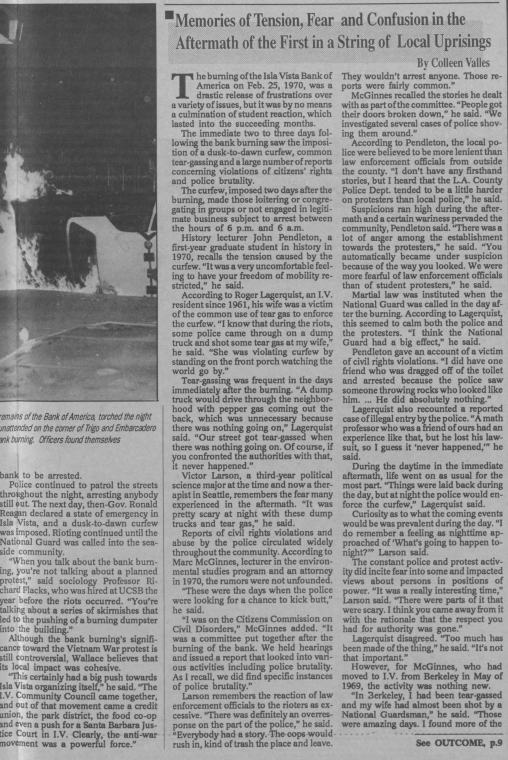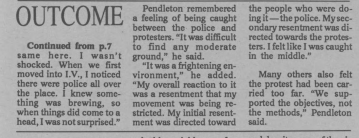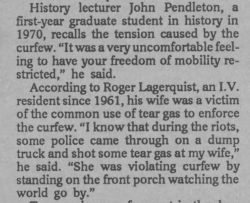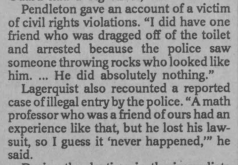Dylan Kupsh is currently enrolled in a graduate program focusing on
Computer Science at UCLA. During COLA, he was in his 3rd undergraduate
year where he was a double major in Computer Science and Sociology.
During his time at COLA, he helped lead many graduate students in
creating events for COLA. He was one of the individuals who devised
the Ortega strike: All Smiles, No Swipes that fed thousands of
students by encouraging students to walk into Ortega and eat.
My name’s Danyela Ornelas. I’m currently interviewing Dylan Kupsh regarding his role in the COLA. So what year and major were you when you first joined COLA?
COLA was my third year. I was a computer science and sociology major.
Did anyone introduce you to COLA?
Not really. I was really involved in the union prior to that and so I was like up to date. And so, you know, everyone, right when I started, it was all of us sort of making it happen.
Yeah, I think that was really difficult to just plan as you go on.
Yeah. It was scary, too, because I was a union officer at the time and I kept getting emails from people in the union saying, don’t say anything about COLA, don’t do anything about COLA.
I know that’s been really scary, especially when harsh punishments were being given to UCSC COLA organizations as well.
But I remember we first started in the fall of that year and it was more like UCSC rebelling against the union. And then it kept getting bigger and bigger and bigger until it like, dwarfs everything else.
Okay. So I know you mentioned that you were also part of the union, but was there anything else that caused you to join the organization and what exactly was your role in this?
Yeah. So as a little background, I was in USLAC, which is the undergrad student labor organization, and then I was also in Students for Justice in Palestine and UAW 2865. And so I was doing a lot of the organizing work on campus with the union UAW. I did a lot with AFSCME Strikes in the past. A lot of my role was trying to constantly expand COLA and also helping out a lot with logistics and planning and relaying what I learned from the AFSCME strikes to COLA– what we’ve learned was successful and what was less successful and also trying not to repeat mistakes that others made.
Yeah. What was the most significant protest to you?
For me, the most significant one was the Blackout day.
Oh, that’s right.
You know, like the days before I was like, oh, this might not be that big. We’ve only been getting like 200 people up the picket line. But then the day of, there were so many people. I think we made a smart decision and we went through the library which made the line go on for like 5 minutes. So there was a constant stream of people marching for COLA. And it was like, Wow, we really did that.
That’s incredible. That’s so inspiring. I understand that your Cheadle hall strike was a tad controversial but regardless it was pretty major.
Yeah. The second part of the Cheadle Hall strike was more impromptu.
Are there any current plans for COLA to bring more awareness to this organization?
I mean, we never really got the goal that we wanted, which is COLA. We were not pushing strong enough, I think. And then the other thing is just that it takes a lot of effort to get to the university and to strike. And I think we would have gotten it like if we were able to get like one or two more quarters. I think that it would have just continued to grow a lot. To the point where we were like Santa Cruz and actually shutting down the campus where people can’t get in and stuff. But I still want that goal.
Yeah, that’s a very important goal. Would you say a factor in not achieving a COLA was due to possibly the pandemic?
Oh, it was totally the pandemic. 100% the pandemic. I think it’s different when you’re at your own campus, like when we’re at Santa Barbara and we can talk to everyone. And everyone at Santa Barbara was on a very similar page about COLA and, or most of the people I talked to. But then when we get into these union conversations, it’s like a bunch of infighting and it’s exhausting. And it’s like people on my campus were wanting to do this and then saying, “Oh, you have to do something else”. And people here weren’t very receptive to that. Yeah, but I do think the pandemic played the biggest role though. Yeah.
Yeah, I remember I was a freshman when this happened, so I remember it being a huge explosive thing and then by spring quarter it just disappeared. I couldn’t believe the university is really failing their own TAs, their own students despite their goal of education.
It was close, I think. I think it’s harder to strike online, but I think we got really close to being able to do it again. But yeah, that was how it ended.
So how do you feel as one of the COLA representatives about the current housing crisis going on at UCSB and in Isla Vista?
Inevitable. I think it’s like the university’s own problem where instead of actually doing their job and building housing and actually trying to host students, they put all of their money in some millionaire to try to fix all their problems, which will probably never come to
fruition.
Yeah. Funny enough, my, my follow up question was going to be, what is what are your personal thoughts on Munger Hall?
Yeah. Yeah, it’s kind of funny because Santa Barbara really needs housing and there’s so many places to build housing. And they haven’t been building housing for like so many years. And then they get this Munger Hall proposal, which is some billionaire (woooo) and then the other proposal that they keep spouting– the Ocean Road one– I remember it receiving a lot of criticism because it was going to cut down the eucalyptus trees and the tunnel. They were going to take out the tunnel. They’re really trying hard not to build housing.
Oh, it’s absolutely crazy. If there is one thing you could change about COLA what would it be?
I mean, not to have the pandemic, I think, would be the biggest one, but outside our control. You know, personally, I think I should have been like start more active from the beginning. But yeah, I don’t know really what to change about the overall movement. I guess there’s a lot of things I think should have played differently around internal racism. And I think there is a lot of interpersonal conflict toward the end that I wish would have changed.
Do you have any final words you’d like to say regarding COLA or to the university?
I don’t think it’s going away. I think it’s going to be continued in a year or in a few years. I think that at some point everyone’s going to say we’re fed up with being so ridiculously underpaid for the work that people do at the university itself. And I think when it comes back, it’s going to be stronger because it’s not just going to be mainly grad students. I think it’s going to be more demanding. I think the university has done a pretty poor job treating workers during the pandemic and after the pandemic. I think every single worker has been basically screwed over by the university, besides, like top professors and administrators. So I think it’s going to get worse.
Does it make you upset as a graduate of UCSB, as an alumni, that there’s still no significant change?
Yeah, well, I’m at another UC, so I’m getting the same problems.
Oh, no.
Now I’m a grad student and I have to live with this poor wage.
And a quick follow-up question. I would love to hear more about the Ortega: All Smiles No Swipes event.
Yeah, yeah. We heard that they did like eight of these at Santa Cruz. And there was someone from Santa Cruz who came down to Santa Barbara for a day. And they told us, you have to do this. And then on the other side, I was friends with AFSCME. The people who worked in the Dining Commons, their organizer, and he was also telling me about other campuses and the mistakes that they made with this. I think it went horribly wrong at Berkeley. So we got together with a group– there was like 30 of us or something– and we spent a whole day planning this out piece by piece. I guess I was the one who led a lot of it because I was the only undergrad that really knew the dining commons. And we did it before with AFSCME where we would go into the dining commons and do protests inside. It’s just a lot different when you’re letting people in for free. But it was really crazy how… I guess I was surprised at how simple it was. We just like went in at the start of the dining period, instantly like take over– the management or whatever was stunned. They didn’t hear anything about it and… I was expecting them to pull food and stop service, but they kept serving. And then lines start pummeling. There were a few people that we
assigned to do, like, social media stuff, and they did an excellent job. And we did a good thing. We were constantly talking to the workers behind the counter. And it was weird too, that the police response at Santa Barbara was different where they only sent an undercover cop who was really easy to spot and like, didn’t do anything.
Really. I didn’t know that.
Yeah. They had, like, a plainclothes cop that they sent and it was kind of funny because it looked like she was trying to dress up, like, as a college student. But you could tell a mile what she was. And yeah, I think it was like one of the best actions because it’s not only like helping food security, which was like a tenet of COLA with housing security, but it also had a direct financial impact on the university where if we kept doing that, you know, it has a big demand. And we were very close to doing it again. It’s just the pandemic.
If I may ask, what dining commons would you have chosen next, or would you have stuck with Ortega?
So we chose Ortega because it’s the easiest to take over. There’s one entrance and by the time you’re inside Ortega, they can’t lock you out. The problem with a lot of dining commons is they just close the door when you’re trying to get in, so you have to shimmy your way in. At DLG there’s that little turntable and they block you from entering.
Yes, I know exactly what you’re talking about.
It’s a lot more complicated. And then Carrillo has the long walkways where they see you for 20 seconds as you’re walking down and then you can never get people to Portola. I think we would have done Carrillo because I think we could have gotten away with it. I think, you know, be cautious of like logistics and stuff. But like, Ortega was just the easiest
one, and that’s why we did it first.
Yeah, that makes sense. I understand Ortega got to the point where it reached capacity very quickly. And from what I remember, there were the managers who were kind of complaining about students taking out food. And I understand COLA, you guys were encouraging them to do so.
Yeah, it was really funny, our interactions with the managers. Like the first thing we did is we went to the managers and we were like, everyone needs to be free today. And they’re like, Wait, wait, wait, we have to approve this. We have to go through our chain of command. And we’re like, you don’t understand. You’re not in charge today. We’re in charge. And it was really funny how quickly they realized what was happening. You know, they had
that one person by the thing like counting capacity. I honestly didn’t think it would ever reach capacity. I thought they would just take away food and it would be good for like 30 minutes or whatever. I did not expect to stay the whole dining period too. And it was also cool seeing people take out food. We brought paper plates because we didn’t want to put extra work on the workers here. So we’ll bring our own paper plates and trash bags and stuff. And the managers during the service kept telling us, “Don’t use those plates, don’t use those plates.” And I was like, “Really? You want to put more work on yourselves
here”, you know? And then at the end, we helped them clean up everything. All of us vacuumed the whole place, cleaned up the tables and everything. I think one of them was like, this is the cleanest Ortega has been while. But yeah, no, it was weird.
I assume you also maybe have spoken to some student workers and chefs. What did they say about COLA? And also about the event?
Yeah. So as I mentioned, a big concern of mine was the workers. I heard at Berkeley, they got really scared because of the way that the COLA people did that action. And so the whole time we, we assigned one person to basically be talking to the workers. And I think the problem that we realized after was that they really only talked to the workers
that you can see because like in Ortega, they hide all the workers in the kitchen or whatever. Yeah. And I think a big problem that we had was a lot of the chefs and stuff, they eat leftovers and there weren’t any leftovers. We ran out of food. And so it was
kind of funny because after we did the event, we’re like, you know, maybe next time we have to order catering even though we’re taking over dining commons, we have to order catering for the workers. And we were actually serious. But I think that was a problem for the student workers, I think. There were mixed reactions where some were like– I remember seeing Reddit– and they’re like, please don’t come to our dining common again. Like, we’re overworked. We kept trying to interact with the workers there when we were taking it over. But I guess they don’t really want to say that it’s causing them more work, which is understandable.
I would like to say that that event was the most positively representative for the students. I would just hear students go on and on about your organization because of this very event. You guys got a huge positive reception because of it.
Yeah, it was a really fun action to do. It was one of the most fun. And it was actually, like, really chill. I didn’t expect it to be that chill because we were taking thousands of dollars of food.
They must been so surprised, especially since you mentioned that other UCs have tried and they faced difficulties doing so.
Santa Cruz like did it eight times and so they were experienced. Berkeley I think the problem was that the grad students that planned it didn’t go to the dining commons and so they didn’t know. And they also didn’t really think about the workers inside. At UCLA, it was all undergrads that planned it, so they did good. And yeah, I guess it was trying to make sure that we’re anticipating the people inside. But yeah, it was cool. We were very close to not doing it.
Really, why?
People felt uneasy. Because it’s a really high-stakes action where it’s hard to protect the safety of everyone doing it. And it’s much different because it’s not your safety personally. It’s the people you’re letting into the dining commons. We’re not the ones that are eating the food. Like, I think most of the people in COLA, like the ones who planned it, didn’t really eat. We were letting everyone else eat. And so it’s like a different level of safety where you can never really anticipate what the police response or whatever will be. There was also like, is this too much? And we all tried to come to a consensus with everyone beforehand. And there were a few people who were, like, ambivalent about it. But I think afterward everyone was like, Yeah, that was a big success. Glad we did.
It was a huge success. I know you mentioned that one of the flaws of other dining commons strikes was the fact that there was not enough support. Help from
undergraduates. So would you say that alongside graduate students, undergraduates also played a huge role?
I mean, there wouldn’t be COLA without undergrads. There’s a lot of people on campus that I think are making that mistake, like a lot of worker organizations that are ignoring undergrads. But I think it was quite clear that wouldn’t happen without undergrads. You know, the marches were amplified. The amount of people who are actually quote-unquote on strike was dwarfed by the number of undergrads. The dining common action was me and a few other undergrads. I don’t think it would have happened without us because a lot of grad students just didn’t know the dining commons. It was kind of funny because when you’re first planning this action, we did a whole walk-through of it when the dining commons was closed and no one was there. And we literally rehearsed everything to a
tee and when we were trying to find the building all the grad students were like, “Where is Ortega? I’ve never heard of Ortega before.”
And I thought that was funny because I’d been here for three years. How do you not know where Ortega is or this other dining commons? And they’re like, It’s right next to the GSA lounge. But yeah, I think undergrads played a huge deal, especially at the beginning, too, like the Cheadle Hall sit-in. A lot of grad students brought their sections, and I think that’s what made the difference for the Cheadle Hall thing. And why it was so successful at the beginning was because there were like ten of us sitting in the office and then like one person brought a group of 30 people and did section right in the hallway or whatever. And I think that made it really, really effective.
And besides undergraduate support, what was the faculty reception like?
I think faculty support was it was really good at Santa Cruz. It was instrumental at Santa Cruz. It helped a lot of the wild cats get their jobs back. I was in a lot of those meetings and about them getting their jobs back and realized the arguments that we were making as a union relied upon faculty support and it worked. They got their jobs back. But at Santa Barbara, I personally wasn’t involved in the faculty thing because I think faculty are really hard at Santa Barbara to organize in terms of like who to contact and their position on campus. I think the people who did it did a good job. There were like 30 or 40 professors and they did their own march one day and I thought it was really cool. The faculty in the history department were the main ones pushing forward the faculty for COLA. I don’t envy people who had the role of getting faculty on board.
Were you ever afraid that what happened UCSC to graduate students would happen to UCSB? Was there a threat of losing your job?
I guess talking to a lot of UCSC people, I don’t think they lost pay over that. They lost pay in the intermediate time when they were off their jobs. I think the point about the job loss is that we had a union, we had good appointment section rights and I think most people weren’t concerned about being fired. It was there, but it was also not the biggest concern. I wasn’t nervous about people being fired. I think if they fired them, it would have made COLA ten times bigger. And they didn’t fire them. I guess I wasn’t nervous about them trying to. I imagine if the grading strike went on for a very long time, they would have made an attempt. But from my position, the university didn’t care about the teaching strike. They only cared about them doing the grading strike.
And I feel like UCSB was relatively silent about talking to the school as a whole regarding COLA. How do you feel about that? There were no major messages from Chancellor Yang.
Yeah, I wasn’t surprised. That’s the way that Yang did it in the past. He’s the type of person who won’t say anything publicly. He’ll do it all privately. There were three AFSCME strikes and UCSB never gave a single comment about any of the three AFSCME strikes. And I was like, you know, this is their game plan. I think the administration in the back of their offices was scared to help. Like when we did the sit-in, it was funny because we were in Chancellor Yang’s office and we see one of the workers in the office point out that they got a report from UCOP on COLA. We could see them photocopying it in their printer room and they
whisked it off to another room right away to try to hide it from us. But I thought that was really funny. I think there was there was this fear from the university about if they said anything about COLA, then they would get a union lawsuit like what happened at Santa Cruz with the housing thing. I think they did try to meet with us and I think we did have one meeting with them. The Vice-Chancellor, David Marshall or whatever, had a printout of every COLA story on Instagram. Like he had a folder and he literally printed out every single folder on Instagram. And I thought that was like, yeah, they’re definitely stalking us.
Would you feel that COLA would have grown a little bit larger had the university made any public statements? I understand there was fear of lawsuits, but how do you feel about that?
Yeah. If they tried to fire anyone. I think there’s nothing that you can do to grow it more than doing something like that. I think it would have grown more if they said something.
And how do you feel about any negativity towards COLA? I remember looking up news articles about your events and there were many negative comments regarding COLA, calling the organization is kind of a waste of time.
I mean, we got what we accomplished or we got a big movement. I think there were some comments about like the Cheadle Hall lock-out thing that we did that I think were fair. It didn’t go to plan that day. I think that a lot of staff were incensed about the way that we handled a lot of the walkouts. But I think ultimately all the comments that were negative were outdone by a lot. And I would constantly be looking up on like the Daily Nexus and stuff and seeing what people were saying to see if there were any worthwhile criticisms. I think self-criticism is really important and mistakes that we weren’t thinking of that we made. And, you know, I think a lot of them were just like rich alumni saying something about like back in my day or whatever, and it’s ridiculous. But they got kind of outsized by everyone else.
Oh, for sure. I can wholeheartedly say as a current undergrad that the undergraduate is in full support of what COLA had done.
I think undergrad demands were largely left out of COLA. My interpretation of COLA is it’s kind of vague on like what the demand is. I think there was an attempt to really deliberately include more and more undergrads. I think most undergrad positions are way worse than what grad students face. And I think that it’s not as public and I do think it was constantly left out. A bit too much in my opinion. Yeah.
And then I guess the other side of it is the union dynamic. I think a lot of the statewide union leadership really sold out. And it was weird because like at LA, they did a whole thing like, please don’t go on strike. Please don’t go on strike. They’re like, begging us and it’s like, why? Why are they so scared? You know, a bunch of people are getting together, why are you trying to stop that? Internally, I think that was extremely present with a lot of the organizers. Me and Sheila were the two UAW people at UCSB the whole time, and I became the chair of the UAW at UCSB right when the pandemic hit. And it’s like we’re both facing this incredible pressure from not just the university, but UAW itself and UAW trying to cover itself. And I thought that was sort of antithetical to what we were trying to build. I don’t think a lot of people in UAW have really reflected on what they did during that time. And I hope they do. And I hope a lot of people learn from what COLA created, how effective graduate labor is in the university because there’s a lot of people that say you can’t strike unless you get so many people in this department to say, like, I’m not working. But COLA… there wasn’t. I think there were a lot of people, but it wasn’t like half of all TAs were doing this, but like 20 or 30% of all grades were withheld at Santa Cruz.
And that was more than 80% of students or something. It’s like a huge amount of students like were like, “where is my grade? Where’s my grade?” And I think it shows how integral graduate labor is to the university and how easy it is to shut down the university if you just don’t grade for like a quarter the whole university falls apart. And I think that’s kind of a lesson to show how neoliberal the university is, where it relies upon not the actual teaching, where they, they don’t really care as much about the teaching, but the grades. But it’s also, I think, instrumental for the future in trying to get a COLA contract or cops off campus, that you really don’t need 100% of people. You need a really committed group of rank and file people, and they can make a huge impact on the university. And I think it’s understated how much it affected them. And I guess while I’m on that note, I think it also revealed how incompetent a lot of university staff are. And, you know, I went to the lawsuit meeting every single question, the Santa Cruz labor relations person was like, yeah, after COLA, I finally read the UAW bylaws and I’m like– it’s your job! You’re getting paid 100K and you haven’t read the bylaws of the union that you’re supposed to be interacting with.
And it’s how reactive they are. I dealt with the Santa Barbara people for two or three years and they don’t prepare for meetings until like 10 minutes before. A lot of people are
trying to say the university is smart. The university is really playing this strategically. They’re thinking through all of their decisions. They have a ton of time. They’re going through ten chains of lawyers. When I really think the university always waits until the last possible second and they’re not as prepared as a lot of people think they are. I could see during bargaining the UCOP people don’t prepare for meetings, really. They just seem a little overworked, but who cares? Because they’re paid too much. But they’re like preparing like 5 minutes before these meetings and the only time that they actually prepared was during COLA when they were like oh, shoot, we actually have a huge problem where our university is getting shut down. And I think a lot of people still are thinking the university is really, really smart and strategic and stuff. And I don’t think that’s true. I guess that’s my opinion.
Thank you so much for sharing that with me. I understand that university disorganization is honestly a problem. You guys practically went to every meeting. You guys devised a very reasonable list of demands for the university. For them to just kind of glance at it seems kind of insulting.
Yeah, it feels like the university is constantly on PR watch where they’re just doing stuff according to their own interests or whatever. And then finally, when something goes bad, they try to overcorrect. Like, with this Munger Hall, it seemed like for years they were basically like stalling it out, like not doing much. And then, like, right once the stories hit, they’re in full damage control mode. And I don’t think it was strategic. It’s just being lazy.
Yeah. Thank you. Thank you again so much for your time. I really do appreciate it.
Interviewed by: Danyela Ornelas
